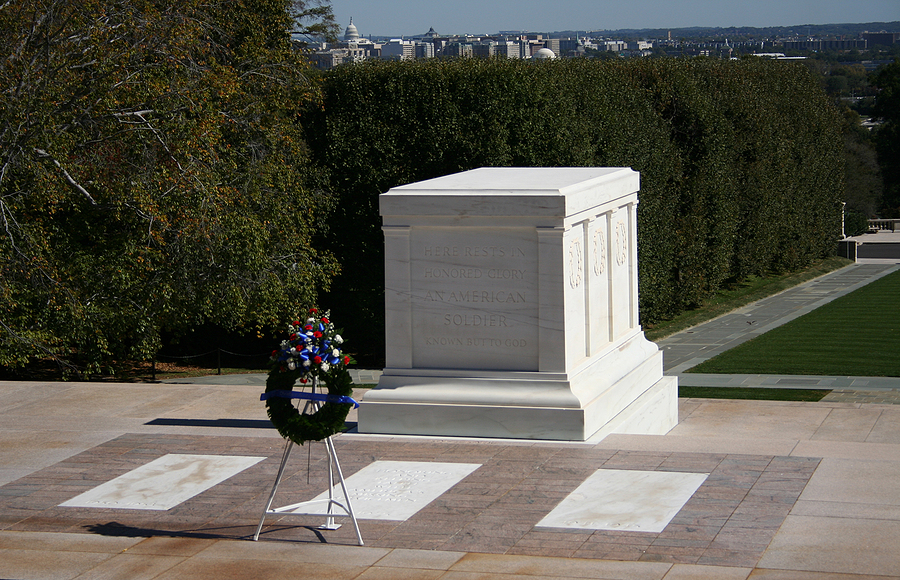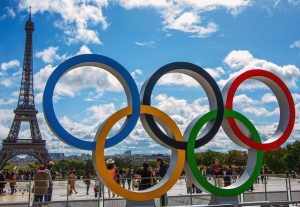This history of Memorial Day is long but not complicated and dates back to the Civil War. The Civil War ended on April 5th, 1865, but the suffering and the pain of loss didn’t end, even in 1868. The Civil War left the US with a high number of casualty rates for soldiers not provided personal identification which left family members without any idea of what happened to their loved ones. As a result, former U.S. Army Major General John A. Logan (also an Illinois congressional representative and the commander-in-chief for the GAR – Grand Army of the Republic – the nation’s largest organization of Union veterans) designated May 30th as a day of national remembrance and called it “Decoration Day”.
Shortly after, in 1873, construction of an amphitheater was completed near the Arlington House with its intended use for Decoration Day remembrance and commemoration. This amphitheater drew in large crowds every year resulting in a 1903 proposal by Judge Ivory Kimball (also a civil war veteran) to expand the amphitheater. The expansion was approved in 1913 with construction beginning in 1915. In 1920, the Memorial Amphitheater was formally dedicated and opened to the public. Over the years changes have been made to the amphitheater and Decoration Day has become better known as Memorial Day but the purpose is still the same, a space given to share in the reflection of the lives given by Americans at wartime and to grieve for those who gave the ultimate sacrifice.
Located in the Memorial Amphitheater is the Tomb of the Unknown Soldier, also known as the Tomb of the Unknowns. The tomb is located atop a hill and is nearly perfectly geographically centered in the Arlington National Cemetery. This majestic marble tomb dates back to December of 1920, when New York Congressman and World War I veteran Hamilton Fish Jr. proposed legislation that would provide a place of rest for one Unknown American Soldier from World War I, in the plaza at Arlington National Cemetery. This idea was likely based off France and Great Britain’s Armistice Day (November 11, 1921) in which one unknown warrior was buried at the Arc de Triomphe and another inside Westminster Abbey. Congress moved forward with the legislation and an Unknown Soldier was buried in memorial, in the plaza, on November 11, 1921.
That wasn’t enough though, it was always meant that the memorial be larger than it already was. As a result, the United States congress held a design competition. This competition delivered 73 total applicants with the wining designers being Architect Lorimer Rich and Sculptor Thomas Hudson Jones.
Lorimer Rich’s design was approved and shortly thereafter, the search for marble began. It was a long process to find the perfect marble but when found, it came from the Colorado Yule Marble Quarry and the Vermont Marble company quarried it with the help of 75 men. Fun fact: this quarry is the same quarry that provided the marble for the Lincoln Memorial and due to metamorphic factors geographically in the area, this quarry created some of the best marble in the country.
To pull this block of marble from a quarry 10,000 feet above sea level would be complicated today, let alone in 1931. The pure white marble block when pulled from the mountain weighted 124tons and was cut down with a wire saw to a weight of 56 tons.
Once quarried, the marble was sent to the marble mill in the town of Marble, Colorado which although only 2.8 miles away took an entirety of 4 days to complete. The marble mill crated the block and then shipped it to Procter, Vermont. Upon arrival in Vermont, the architect, sculptor, a representative from the Quartermaster General’s Department, and a contractor inspected the piece and approved that work could begin. 
The tomb was partially sculpted in Procter, Virginia by Thomas Hudson Jones. From Procter, it was shipped by rail to the Arlington National Cemetery for final sculpting. In all, it was a total of seven months to move the marble from the quarry and land it in its final resting place. The last of the sculpting was completed onsite by the Piccirilli Brothers under the direction of Thomas Jones. Fun fact: the Piccirilli brothers also carved the Abraham Lincoln statue as well as the lions you see outside of the New York Public Library. 
About The Tomb
- A formal ceremony was held on April 9, 1932, to commemorate the finished tomb.
- The tomb honors and remembers those who died at war without any witnesses beared.
- The tomb has four levels (cap, die, base, and sub-base) with the die being the largest block of marble and in which you can see the design. It is 11’ high, 8’ wide at the base, 6’8” wide at the top, with a total length of 13’11” at the base and 12’7” at the top.
- The North and South panels are sculpted with inverted wreaths. These wreathes represent a “World of Memories”. Each wreath has 38 leaves and 12 berries.
- The West Panel is inscribed with “HERE RESTS IN HONORED GLORY AN AMERICAN SOLDIER KNOWN ONLY TO GOD”.
- The East Panel has three Greek figures sculpted which represent Peace, Victory, and Valor.
-
- The female figure of Peace is holding a dove to symbolize peace and friendship.
- The center figure is that of Victory, who is extending an olive branch towards the male figure while holding the hand of Peace.
-
- The male figure on the right is holding a broken sword and represents Valor.
- The budget for the tomb was approved at $50,000 but in the end, it was completed for $48,000. That’s approximately $860,000 in today’s money.
- It was Mr. Jones who sculpted the wreaths and the Greek figures while the Piccirilli brothers completed all other sculpting tasks.
- The memorial is placed in such a place that a visitor’s first view is from 20’ below, which is considered to be the most impressive angle.
- Every president since 1921 has stood in this spot to commemorate Memorial Day.
- There has been a total of four unknown soldiers buried at the tomb, all from different wars. World War I, World War II, The Korean War and the Vietnam War.
-
- The last soldier buried at the tomb (from the Vietnam War) was disinterred from the tomb in 1998 and his identity was determined with help of a DNA test. Where this soldier used to be, there is now a crypt cover inscribed with “Honoring and Keeping Faith with America’s Missing Serviceman 1958-1975”.
- Over 250,000 US flags adorn the Arlington National Cemetery on Memorial Day, with one small flag at each headstone and along the bottom row. This takes 4 hours to accomplish.
- Since April 6, 1948, the tomb has been guarded by the 3rd U.S. Infantry Regiment (The Old Guard) for 24 hours a day, 365 days per year, with absolutely no exceptions. These military members are called The Sentinels of the Tomb of the Unknown Soldier and undergo extensive interviews, trainings, and tests.
-
- This regiment is called The Old Guard because it is the oldest active-duty infantry unit in the Army, serving the nation since 1784.
-
- All Sentinels must be in “ superb physical condition” and be within a certain heights
-
-
- Men: 5’10” – 6’4”
- Women: 5’8” and 6’2”
-










